
Pentatomidae is a family of insects belonging to the order Hemiptera, generally called shield bugs or stink bugs. Pentatomidae is the largest family in the superfamily Pentatomoidea, and contains around 900 genera and over 4700 species. As hemipterans, the pentatomids have piercing sucking mouthparts, and most are phytophagous, including several species which are severe pests on agricultural crops. However, some species, particularly in the subfamily Asopinae, are predatory and may be considered beneficial.

Alydidae, commonly known as broad-headed bugs, is a family of true bugs very similar to the closely related Coreidae. There are at least 60 genera and 300 species altogether. Distributed in the temperate and warmer regions of the Earth, most are tropical and subtropical animals; for example Europe has a mere 10 species, and only 2 of these occur outside the Mediterranean region.
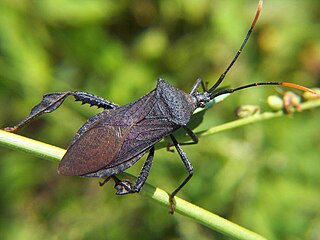
Acanthocephala, also known as spine-headed bugs, is a New World genus of true bugs in the family Coreidae. The scientific name is derived from the Greek ἄκανθα (akantha) meaning "thorn/spine" and κεφαλή (kephale) meaning "head". This name refers to the diagnostic spine on the front of the head.

Dysdercus is a widespread genus of true bugs in the family Pyrrhocoridae; a number of species attacking cotton bolls may be called "cotton stainers".
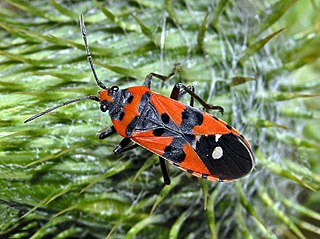
Lygaeus is a genus of seed bugs in the family Lygaeidae. There are more than 60 described species in Lygaeus.

Alydinae is a subfamily of broad-headed bugs in the family Alydidae. There are about 24 genera and more than 140 described species in Alydinae.
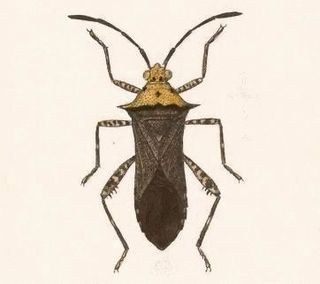
Zicca is a genus of leaf-footed bugs in the family Coreidae. There are about 19 described species in Zicca.

Catorhintha is a genus of leaf-footed bugs in the family Coreidae. There are more than 30 described species in Catorhintha.

Piezogaster is a genus of leaf-footed bugs in the family Coreidae. There are at least 30 described species in Piezogaster.

Oncopeltus is a genus of seed bugs in the family Lygaeidae, which has at least 40 described species.
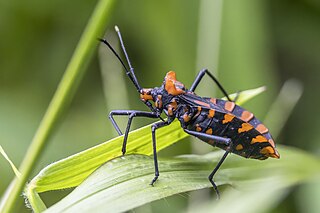
Spartocera is a genus of leaf-footed bugs in the family Coreidae. There are about 18 described species in Spartocera.
Althos is a genus of leaf-footed bugs in the family Coreidae. There are more than 20 described species in Althos.

Limnogonus is a genus of water striders in the family Gerridae. There are 28 described species in Limnogonus. Similar to other gerromorphan bugs, most species of Limnogonus have both macropterous specimens, which means that they are often able to fly. The wings are thought to be an adaptation to help the insects get away from drought allowing them to fly to the next available area that has water bodies when the rainy season arrives

Stenocoris is a genus of rice bugs in the family Alydidae. There are more than 20 described species in Stenocoris, found in Africa and the Americas,
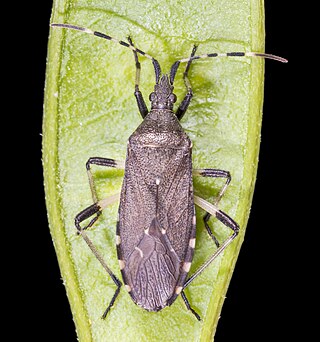
Dicranocephalus is the sole genus of true bugs in the family Stenocephalidae. There are about 30 described species in the genus Dicranocephalus.

Physopelta is a genus of bordered plant bugs in the family Largidae. There are about 30 described species in Physopelta, found in Asia and Oceania.

Mictis is a genus of sap-sucking insects in the family Coreidae, with species recorded from India, China, Vietnam and Malesia through to Australia. It was described by William Elford Leach in 1814.

Acanthocoris is the type genus of the tribe Acanthocorini, erected by Amyot and Serville in 1843. Species of these leaf-footed bugs have been recorded from Africa and Asia.
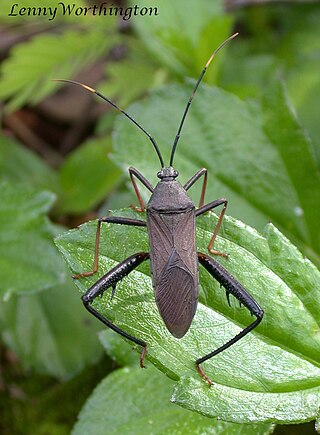
The Cloresmini, sometimes called bamboo coreids, are a tribe of leaf-footed bugs, in the subfamily Coreinae erected by Carl Stål in 1873. Genera are distributed from India, China, Indochina, Malesia through to New Guinea.




















